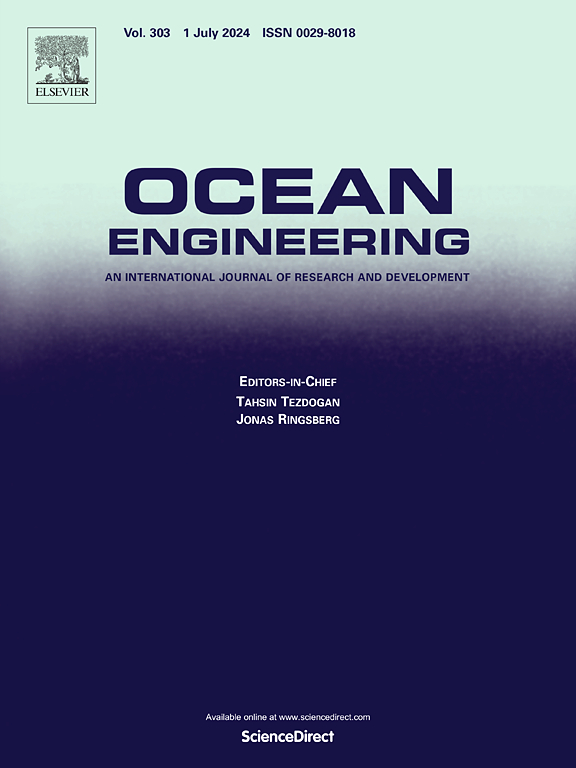Penetration of a modified suction caisson in sand considering seepage effect
IF 4.6
2区 工程技术
Q1 ENGINEERING, CIVIL
引用次数: 0
Abstract
The modified suction caisson (MSC) adds an external skirt surrounding the top of traditional suction caisson (also called internal caisson here) to increase bearing capacity and to limit its deflection, which can be used in offshore engineering. The seepage effect will change the effective stress of soil around the caisson sidewall during penetration in sand. Meanwhile, piping will occur when the required suction exceeds the critical suction, leading to penetration failure. Therefore. The reliable method to predict the required suction for MSC penetration is necessary by considering the seepage effect. This study explores the influence of length/diameter ratio (L/D) on seepage fields by finite element analyses. The variation of excess porewater pressures (EPPs) and hydraulic gradients (HGs) around the caisson sidewall are revealed. Moreover, the probability of a risk of piping and sand flow decreases as L/D increases under the same suction. Finally, the seepage fields are analyzed when the suction is generated within the internal caisson. The method of calculating the MSC penetration resistance considering the seepage effect is formulated in terms of the principle of static equilibrium. In addition, a new method for estimating the required suction is proposed and validated by model tests.
求助全文
约1分钟内获得全文
求助全文
来源期刊

Ocean Engineering
工程技术-工程:大洋
CiteScore
7.30
自引率
34.00%
发文量
2379
审稿时长
8.1 months
期刊介绍:
Ocean Engineering provides a medium for the publication of original research and development work in the field of ocean engineering. Ocean Engineering seeks papers in the following topics.
 求助内容:
求助内容: 应助结果提醒方式:
应助结果提醒方式:


